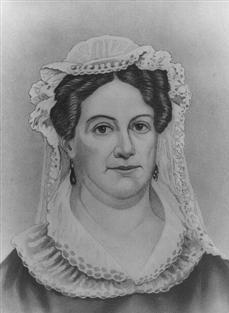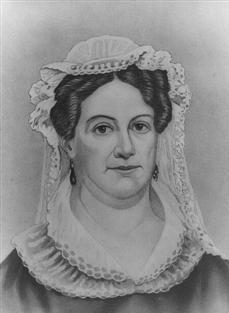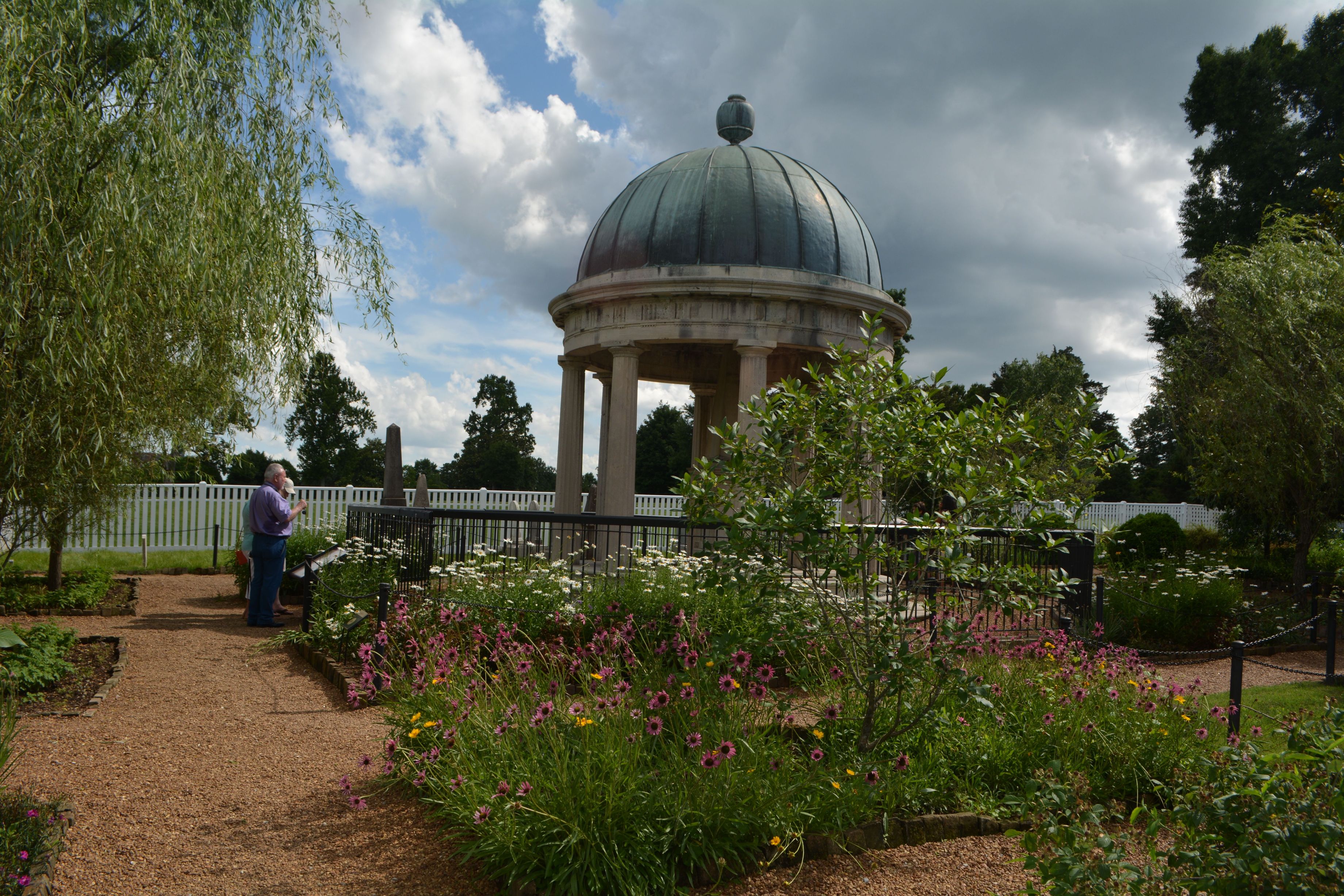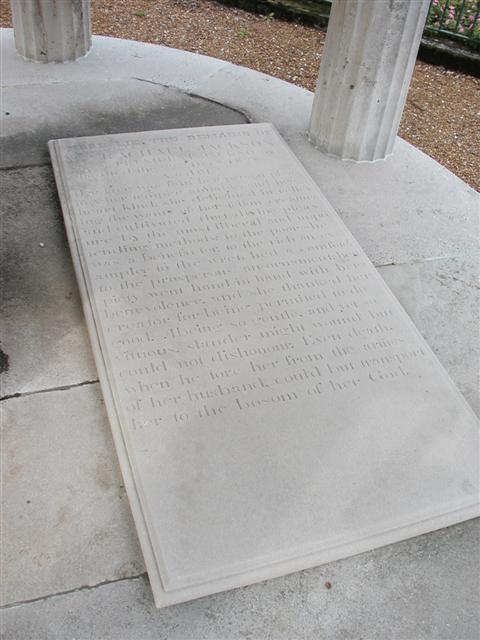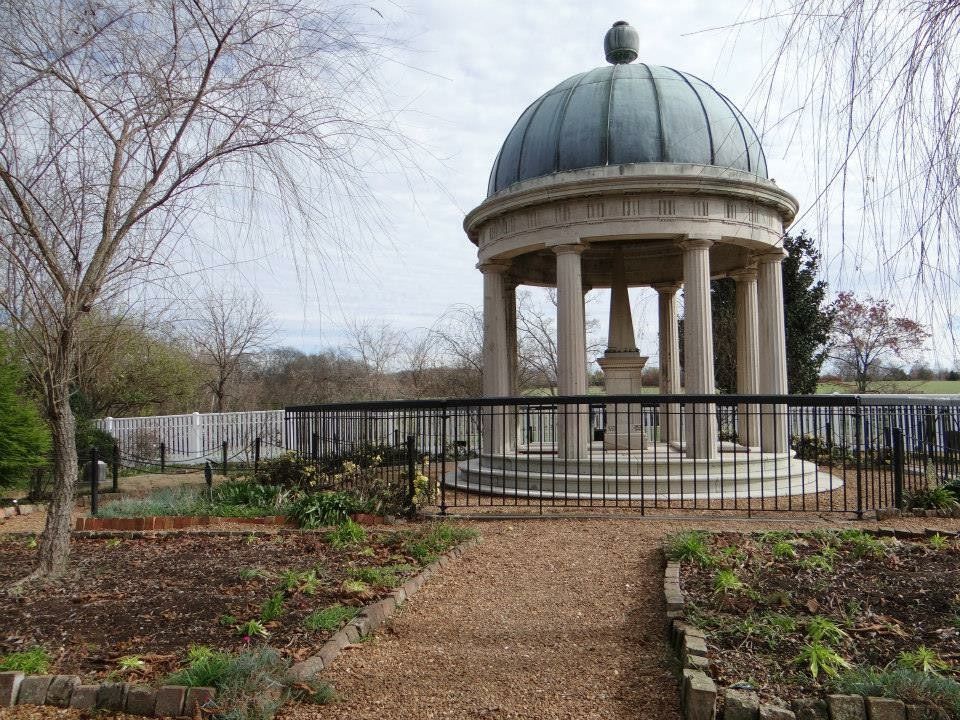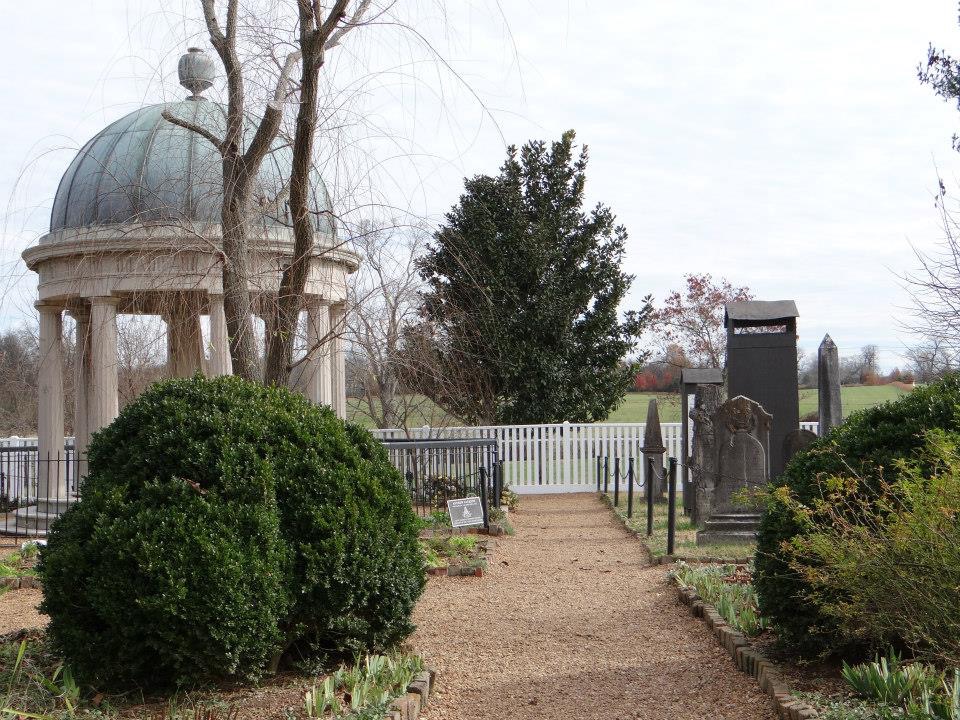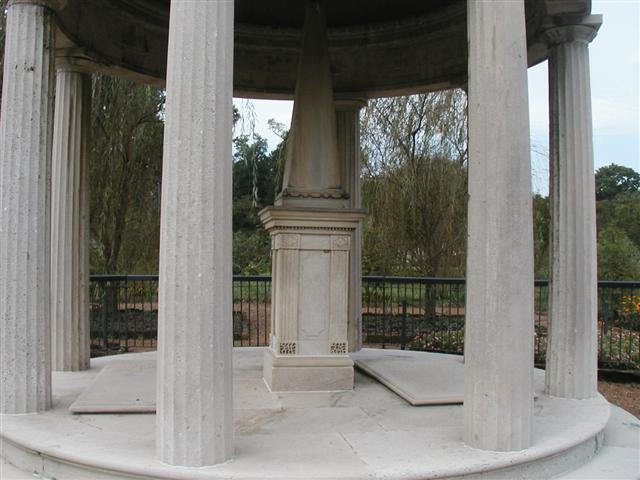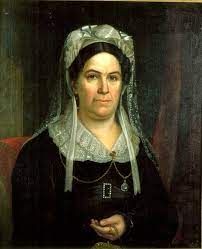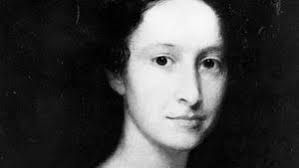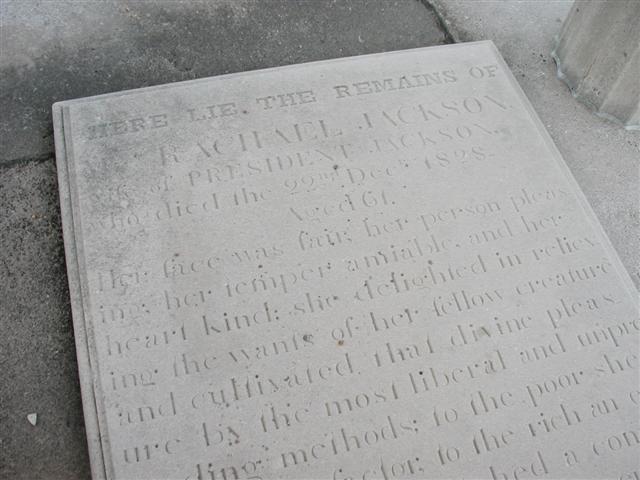United States First Lady. Rachel Jackson, as the wife of the 7th President of the United States, Andrew Jackson, should have served as the nation's First Lady, except she died between her husband's election and his March 4, 1829, inauguration. The role of First Lady was assumed by Emily Donelson, her niece.
Born Rachel Donelson, the fourth daughter of a total of twelve children, her formal education consisted of learning to read the Bible and poetry. A Presbyterian, she had a humble Christian character and never wanted to be in the spotlight, though she was considered very beautiful, gaining attention with her dark eyes and hair. Her father was well-known and the co-founder of Nashville, Tennessee.
In 1784, she married Capt. Lewis Robards of Kentucky. The marriage had problems. The couple separated by 1790, and she returned to her mother's home in Nashville. She met Jackson while he was a lodger at her widowed mother's house. Thinking that her divorce was final, she eloped to Mississippi with Jackson in 1791, but later learned that the divorce was not final. The couple legally remarried in 1794. The divorce was granted on the grounds of her abandoning the marriage and adultery. The fact that the territory of Mississippi was under Spanish control and only Roman Catholic marriages were recognized played a role as the couple was Protestant. Although not intentional, she was guilty of bigamy, the act of entering into a marriage with one person while still legally married to another.
This provided fuel for scandal for her husband's political opponents, especially John Quincy Adams, during the 1828 Presidential election. Her husband believed that the bitter stress of his election led to her death, but grieving the death of her son and her long-standing frail heart condition played a major role in her death as did the fact that she was a heavy pipe smoker. She was an anxious person, especially when her husband was away for long periods fighting in the War of 1812 and the First Seminole War.
The couple did not have any biological children, but adopted her great-nephew, Andrew Jackson Hutchings in 1817. They also adopted her nephew Andrew Jackson, Jr. They also adopted a Native American boy from the Creek tribe, Lyncoya, who was found, as a child, on a battlefield with his dead mother; Lyncoya died as a teenager of tuberculosis on June 1, 1828. Her husband also served as guardian for the orphaned children of her brother, Samuel Donelson, and of Captain Edward Butler. The children lived with them part time.
She and Jackson made their home at The Hermitage. Located about ten miles east of Nashville, The Hermitage was a 1,000+ acre plantation, worked by African slaves. Andrew Jackson, Jr. inherited The Hermitage and began to sell portions of the property. After Jackson, Jr.'s death, Andrew Jackson III became the owner of The Hermitage, but was unable to maintain the property. In 1893, he left the estate, which was in a state of great disrepair, and eventually it came under the State of Tennessee's ownership.
On Christmas Eve, she was buried in a garden of The Hermitage in the white gown that she had planned to wear to her husband's United States Presidential inauguration. Later, her husband built a permanent temple made of limestone resembling a Greek-styled gazebo over her grave. Her husband would find his final resting place next to her.
The Hermitage was designated a National Historical Landmark in 1970. A home for Confederate veterans was established on the grounds in 1892, and 480 veterans have been buried in an onsite cemetery. Irving Stone's 1951 book, "The President's Lady," tells the saga of her life with Andrew Jackson. Two movies have been made about her life story; one received an Academy Award nomination.
United States First Lady. Rachel Jackson, as the wife of the 7th President of the United States, Andrew Jackson, should have served as the nation's First Lady, except she died between her husband's election and his March 4, 1829, inauguration. The role of First Lady was assumed by Emily Donelson, her niece.
Born Rachel Donelson, the fourth daughter of a total of twelve children, her formal education consisted of learning to read the Bible and poetry. A Presbyterian, she had a humble Christian character and never wanted to be in the spotlight, though she was considered very beautiful, gaining attention with her dark eyes and hair. Her father was well-known and the co-founder of Nashville, Tennessee.
In 1784, she married Capt. Lewis Robards of Kentucky. The marriage had problems. The couple separated by 1790, and she returned to her mother's home in Nashville. She met Jackson while he was a lodger at her widowed mother's house. Thinking that her divorce was final, she eloped to Mississippi with Jackson in 1791, but later learned that the divorce was not final. The couple legally remarried in 1794. The divorce was granted on the grounds of her abandoning the marriage and adultery. The fact that the territory of Mississippi was under Spanish control and only Roman Catholic marriages were recognized played a role as the couple was Protestant. Although not intentional, she was guilty of bigamy, the act of entering into a marriage with one person while still legally married to another.
This provided fuel for scandal for her husband's political opponents, especially John Quincy Adams, during the 1828 Presidential election. Her husband believed that the bitter stress of his election led to her death, but grieving the death of her son and her long-standing frail heart condition played a major role in her death as did the fact that she was a heavy pipe smoker. She was an anxious person, especially when her husband was away for long periods fighting in the War of 1812 and the First Seminole War.
The couple did not have any biological children, but adopted her great-nephew, Andrew Jackson Hutchings in 1817. They also adopted her nephew Andrew Jackson, Jr. They also adopted a Native American boy from the Creek tribe, Lyncoya, who was found, as a child, on a battlefield with his dead mother; Lyncoya died as a teenager of tuberculosis on June 1, 1828. Her husband also served as guardian for the orphaned children of her brother, Samuel Donelson, and of Captain Edward Butler. The children lived with them part time.
She and Jackson made their home at The Hermitage. Located about ten miles east of Nashville, The Hermitage was a 1,000+ acre plantation, worked by African slaves. Andrew Jackson, Jr. inherited The Hermitage and began to sell portions of the property. After Jackson, Jr.'s death, Andrew Jackson III became the owner of The Hermitage, but was unable to maintain the property. In 1893, he left the estate, which was in a state of great disrepair, and eventually it came under the State of Tennessee's ownership.
On Christmas Eve, she was buried in a garden of The Hermitage in the white gown that she had planned to wear to her husband's United States Presidential inauguration. Later, her husband built a permanent temple made of limestone resembling a Greek-styled gazebo over her grave. Her husband would find his final resting place next to her.
The Hermitage was designated a National Historical Landmark in 1970. A home for Confederate veterans was established on the grounds in 1892, and 480 veterans have been buried in an onsite cemetery. Irving Stone's 1951 book, "The President's Lady," tells the saga of her life with Andrew Jackson. Two movies have been made about her life story; one received an Academy Award nomination.
Bio by: Linda Davis
Inscription
"Here lie the remains of Mrs. Rachel Jackson, wife of President Jackson, who died December 22nd 1828, aged 61. Her face was fair, her person pleasing, her temper amiable, and her heart kind. She delighted in relieving the wants of her fellow-creatures,and cultivated that divine pleasure by the most liberal and unpretending methods. To the poor she was a benefactress; to the rich she was an example; to the wretched a comforter; to the prosperous an ornament. Her piety went hand in hand with her benevolence; and she thanked her Creator for being able to do good. A being so gentle and so virtuous, slander might wound but could not dishonor. Even death, when he tore her from the arms of her husband, could but transplant her to the bosom of her God."
Family Members
-
![]()
Catherine "Kate" Donelson Hutchings
1750–1835
-
![]()
Alexander Donelson
1751–1834
-
![]()
Mary Donelson Caffery
1751–1823
-
![]()
Col Stockley Donelson
1752–1805
-
![]()
Capt John Donelson
1755–1830
-
![]()
COL William Donelson
1758–1820
-
![]()
Jane Donelson Hays
1766–1834
-
![]()
Samuel Donelson
1770–1804
-
![]()
Mary T "Mattie" Donelson Smith
1770–1834
-
![]()
Severn Donelson
1773–1818
-
![]()
Levin Donelson
1777–1833
Advertisement
See more Jackson or Donelson memorials in:
Records on Ancestry
Sponsored by Ancestry
Advertisement
